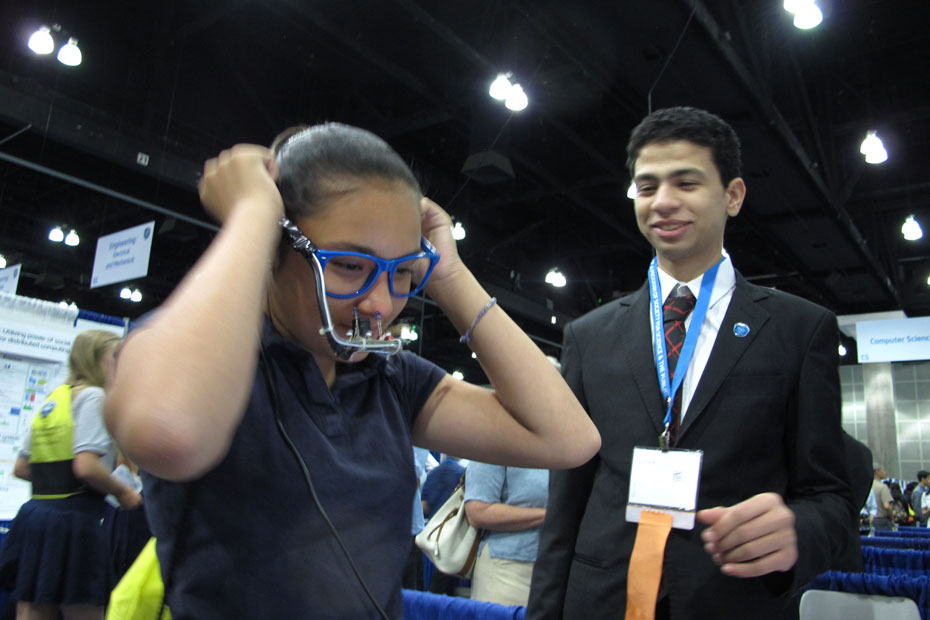 Science
has done a terrific job of answering some of the world’s most
difficult questions, but certain mysteries still elude researchers. How
does gravity work? Can your pet fish really predict an earthquake? Why
do we yawn so much? Here’s what we don’t know and how close we are to
figuring it out.
Science
has done a terrific job of answering some of the world’s most
difficult questions, but certain mysteries still elude researchers. How
does gravity work? Can your pet fish really predict an earthquake? Why
do we yawn so much? Here’s what we don’t know and how close we are to
figuring it out.
1. Why Do People Spontaneously Combust?
Here’s
what we know: Humans really do spontaneously combust. One of the
first people recorded to have gone up in smoke is a poor Italian
knight who burst into flames after drinking strong wine in the mid–17th
century. The cause of the mysterious fireworks befuddles scientists,
but they’re certain that each instance is less spontaneous than it
seems. Over centuries, 120 cases of spontaneous human combustion have
been reported, but because most of the cases involve smokers, a common
hypothesis is that an outside flame is involved. The theory is that a
cigarette scorches the skin and breaks it deep enough to force body
fat to seep rapidly from the wound into burning clothing; together
they act like candle wax and a wick.
It’s far more probable than
the competing idea—that methane gases build up in the intestines and
are sparked from inside the body by a mix of enzymes. But there’s a
problem with testing both theories: Researchers can’t just walk around
setting people on fire. They may have found a substitute that will
answer the question, though. Pig tissue combusts in a way that’s
consistent with the “wick effect,” and samples are far easier to
obtain. Who knew bacon would help solve the mystery of one of Spinal
Tap’s drummers?
2. Why Do We Yawn?

Theories
about why we yawn are as common as grumpy toddlers at nap time, but
two explanations seem plausible after experimental tests. One is that
yawns help cool the brain and optimize its performance. Psychologists
at the State University of New York at Albany say it explains why we
yawn when we’re drowsy: Like the fan in a computer, the yawn kicks in
when our performance starts lagging.
But if yawns are our brains’
way of kick-starting their efficiency, why is yawning contagious? The
brain-cooling camp suggests that it’s a way to maintain group vigilance
and safety. When a member of a pack yawns, signaling that he is not
functioning at his best, the whole group may need to yawn for a
collective cognitive boost.
That’s not the only theory floating
around, though. Another explanation contends that contagious yawning
builds and maintains empathy between yawners. A sympathetic yawn
signals an appreciation and understanding of someone else’s condition
and subconsciously says, “Me too, buddy.” So which story is the
accurate one? Scientists aren’t ready to declare a winner yet—they need
a little time to sleep on it.
3. Why Do Placebos Work?
 When
a new drug enters clinical trials, researchers need a control group
against which to compare its effects. Members of this group are given
what they’re told is the drug but is actually a pill containing no
active ingredients, a placebo. Frequently, though, the control subjects
feel the drug’s effects. Or at least they say they do. What actually
happens to placebo poppers is still unsettled. Some studies have found
objectively measured effects that are in line with a real drug’s
results. Others have found that the benefits are only subjective;
patients said they felt better after taking the placebo, regardless of
their actual improvement. This mixed bag of evidence could support any
number of explanations. There could be an actual physiological response,
Pavlovian conditioning (a patient expects to feel better after
medicating), positive feelings from patient-doctor interactions, an
unconscious desire to “do well” in a clinical trial, or even a natural
improvement in symptoms.
When
a new drug enters clinical trials, researchers need a control group
against which to compare its effects. Members of this group are given
what they’re told is the drug but is actually a pill containing no
active ingredients, a placebo. Frequently, though, the control subjects
feel the drug’s effects. Or at least they say they do. What actually
happens to placebo poppers is still unsettled. Some studies have found
objectively measured effects that are in line with a real drug’s
results. Others have found that the benefits are only subjective;
patients said they felt better after taking the placebo, regardless of
their actual improvement. This mixed bag of evidence could support any
number of explanations. There could be an actual physiological response,
Pavlovian conditioning (a patient expects to feel better after
medicating), positive feelings from patient-doctor interactions, an
unconscious desire to “do well” in a clinical trial, or even a natural
improvement in symptoms.
Whatever the cause, pharmaceutical
companies are keen to figure out the placebo effect given its potential
to throw clinical trials into disarray. Real drugs often can’t compete
against the effects of fakers, and about half get scrapped in
late-stage trials. For the researchers who’ve spent nearly 10 years
trying to bring their drugs to market, that’s a bitter pill to swallow.
4. What Was Life’s Last Universal Common Ancestor?
A
whale and a bacterium or an octopus and an orchid don’t seem to have
much in common, but deep down they’re all the same. Research reveals
that most of life’s tiniest components, like proteins and nucleic
acids, are nearly universal. The genetic code is written in the same
way across all organisms. A small core of genome sequences is also
similar across major branches of life’s family tree. All this suggests
that every living thing made of cells can trace its lineage back to one
source, a universal common ancestor.
 In
theory, this idea makes a lot of sense. Getting this ancestor to show
up for a paternity test is tougher. Scientists estimate that the last
universal common ancestor (LUCA) split into microbes and later
eukaryotes (animals, plants, and the like) around 2.9 billion years ago.
The fossil record from that era is scant, and by now, the genes that
have traveled down the family tree have been lost, swapped, or shuffled
around.
In
theory, this idea makes a lot of sense. Getting this ancestor to show
up for a paternity test is tougher. Scientists estimate that the last
universal common ancestor (LUCA) split into microbes and later
eukaryotes (animals, plants, and the like) around 2.9 billion years ago.
The fossil record from that era is scant, and by now, the genes that
have traveled down the family tree have been lost, swapped, or shuffled
around.
But some features of proteins and nucleic acids encoded
by these genes—such as their three-dimensional structure—have been
preserved throughout time. A survey of these molecular traits offers a
glimpse at what the last universal common ancestor might have looked
like. Researchers have found that tiny organelles (specialized subparts
of cells) as well as their associated enzymes are shared by all major
branches of life, meaning that they must have been present in the last
universal common ancestor. This and other evidence suggests that the
LUCA was as complex as a modern cell—which doesn’t make our forebear all
that visually impressive. But on the plus side, until scientists get
to the bottom of this question, we can all save money on Father’s Day
cards for the granddaddy of all life on Earth.
5. How Does Memory Work?
For
a long time, neuroscientists thought a memory was stored in a
scattered group of neurons in either the hippocampus or in the
neocortex. Last year, researchers at MIT proved that theory for the
first time by causing mice to remember or forget an event by activating
or deactivating the associated neurons.
It’s an essential piece
to the puzzle, but to recall a memory on its own, the brain has to
activate the correct assortment of neurons. And how exactly the brain
pulls off that trick isn’t fully understood. Studies on rodents and
brain imaging in people suggests that some of the same neurons that the
original experience affected are involved. In other words, remembering
something may not just be a matter of grabbing it from its storage
space but re-forming the memory each time it’s pulled out.
6. Can Animals Really Predict Earthquakes?

The
idea that our furry and feathered friends could warn us about
impending doom is a nice one, but it’s been hard for scientists to
prove. Pet owners have noted how their animals acted funny just before
an earthquake since the days of ancient Greece. There’s no shortage of
reports, but almost every one is anecdotal, based on opinions of what’s
“normal” and “funny” for an animal. And the stories are generally
reported long after the fact.
It’s not out of the question that
animals may sense and react to some environmental change that we don’t
notice—anything from seismic waves to changes in electric or magnetic
fields. However, it’s not clear that earthquakes even produce such
precursors. Plus, whatever the proposed cause, it’s nearly impossible
to test. If we can’t predict earthquakes, we don’t know when to observe
animals, and it’s even more difficult for researchers trying to
reproduce the experiment later. The few “lucky” cases where quakes
happened during animal experiments provide conflicting evidence. If
you’re going to rely on a cat for earthquake advice, consult one with a
degree in seismology.
7. How Do Organs Know When to Stop Growing?
Every
mammal starts out as a single cell before growing into trillions of
them. Usually, there’s tight control over the number and size of cells,
tissue, and organs, but sometimes things go very wrong, resulting in
anything from cancer to a leg that’s larger than its partner. So what’s
sending the “stop growing” signal?
Four proteins that make up the
core of what’s known as the Salvador-Warts-Hippo signaling pathway
appear to help regulate growth for a number of organs. Shutoff signals
sent down the pathway deactivate the protein that promotes growth, but
that’s where scientists’ knowledge stops. Where these signals originate
and which other elements are affecting SWH is unknown. Scientists
continue to learn how to manipulate the pathway, discovering new
triggers and working their way to the source, but there are still a lot
of mysteries—including how we may be able to “turn off” cancer.
8. Are There Human Pheromones?
Can
you actually smell someone’s fear? Or sniff out a rat? Plenty of
animals communicate with chemical signals called pheromones, but whether
humans are part of that club is a contentious issue. There’s some
evidence of people making behavioral and physical changes in response to
chemosignals, but scientists haven’t been able to figure out which
chemicals trigger these responses. And despite what the labels on
pheromone-infused colognes and hair gels will tell you, no compound has
been identified as a human pheromone or linked to a specific response.
Moreover,
if people are giving off pheromones, scientists aren’t sure how others
are detecting them. Many mammals and reptiles have what’s known as a
vomeronasal organ that detects pheromones. While some human noses
contain the tiny organ, it may not be functional; sensory neurons have
little or no connection with the nervous system. So for now, the answer
to this question remains “maybe.” And that uncertainty truly stinks.
9. What’s the Deal With Gravity?

Of
the four fundamental forces of nature, gravity is the runt of the
litter. It holds the universe together, but it’s weaker than its three
siblings: electromagnetism, weak nuclear forces, and strong nuclear
forces. How much punier is it? The next step up, weak nuclear, is 10^26
(100,000,000,000,000,000,000, 000,000) times stronger. Gravity’s
relatively feeble pull makes it hard to demonstrate with small objects
in the lab.
Gravity doesn’t play well with the other forces
either. Try as they might, scientists can’t use quantum theory and
general relativity to explain gravity on small scales. And this
incompatibility leaves us short of physicists’ grandest goal: a unified
theory of everything.
Worse still, scientists can’t even figure
out what gravity is made of. The other fundamental forces are all
associated with particles that help carry them, but no one’s been able
to detect the gravitational particle—the hypothetical graviton—even
with the most super of supercolliders! And while some scientists are
frustrated by its elusive nature, others know it’s just gravity’s
way—the force has a reputation for bringing us down.
10. How Many Species Are There?
Taxonomists
have been finding, naming, and describing species in an organized
manner for more than 200 years, and they’re probably nowhere close to
being finished. It’s not that they’re slacking off on the job either.
In the last decade alone, scientists have reported more than 16,000 new
species per year; in total, they’ve cataloged 1.2 million. It’s
anybody’s guess how many are left undiscovered, though. Going out and
finding every single species would take the 300,000 working taxonomists
a lifetime, so they have to make educated guesses.
Making these
kinds of extrapolations presents serious logistical hurdles.
Biodiversity hotspots often fall in developing countries, which suffer
from a shortage of taxonomists. Furthermore, up to 80 percent of the
planet’s life may be hiding out in hard-to-reach places under the sea.
Given
these troubles, it’s no wonder there’s a wide variance in expert
guesses of how many species are left undiscovered. The most recent
ballpark figures place the number between five and 15 million species,
which makes the odds of someone discovering a unicorn just slightly
better than we’d even dared to dream.


















 Science
has done a terrific job of answering some of the world’s most
difficult questions, but certain mysteries still elude researchers. How
does gravity work? Can your pet fish really predict an earthquake? Why
do we yawn so much? Here’s what we don’t know and how close we are to
figuring it out.
Science
has done a terrific job of answering some of the world’s most
difficult questions, but certain mysteries still elude researchers. How
does gravity work? Can your pet fish really predict an earthquake? Why
do we yawn so much? Here’s what we don’t know and how close we are to
figuring it out. Theories
about why we yawn are as common as grumpy toddlers at nap time, but
two explanations seem plausible after experimental tests. One is that
yawns help cool the brain and optimize its performance. Psychologists
at the State University of New York at Albany say it explains why we
yawn when we’re drowsy: Like the fan in a computer, the yawn kicks in
when our performance starts lagging.
Theories
about why we yawn are as common as grumpy toddlers at nap time, but
two explanations seem plausible after experimental tests. One is that
yawns help cool the brain and optimize its performance. Psychologists
at the State University of New York at Albany say it explains why we
yawn when we’re drowsy: Like the fan in a computer, the yawn kicks in
when our performance starts lagging. When
a new drug enters clinical trials, researchers need a control group
against which to compare its effects. Members of this group are given
what they’re told is the drug but is actually a pill containing no
active ingredients, a placebo. Frequently, though, the control subjects
feel the drug’s effects. Or at least they say they do. What actually
happens to placebo poppers is still unsettled. Some studies have found
objectively measured effects that are in line with a real drug’s
results. Others have found that the benefits are only subjective;
patients said they felt better after taking the placebo, regardless of
their actual improvement. This mixed bag of evidence could support any
number of explanations. There could be an actual physiological response,
Pavlovian conditioning (a patient expects to feel better after
medicating), positive feelings from patient-doctor interactions, an
unconscious desire to “do well” in a clinical trial, or even a natural
improvement in symptoms.
When
a new drug enters clinical trials, researchers need a control group
against which to compare its effects. Members of this group are given
what they’re told is the drug but is actually a pill containing no
active ingredients, a placebo. Frequently, though, the control subjects
feel the drug’s effects. Or at least they say they do. What actually
happens to placebo poppers is still unsettled. Some studies have found
objectively measured effects that are in line with a real drug’s
results. Others have found that the benefits are only subjective;
patients said they felt better after taking the placebo, regardless of
their actual improvement. This mixed bag of evidence could support any
number of explanations. There could be an actual physiological response,
Pavlovian conditioning (a patient expects to feel better after
medicating), positive feelings from patient-doctor interactions, an
unconscious desire to “do well” in a clinical trial, or even a natural
improvement in symptoms. In
theory, this idea makes a lot of sense. Getting this ancestor to show
up for a paternity test is tougher. Scientists estimate that the last
universal common ancestor (LUCA) split into microbes and later
eukaryotes (animals, plants, and the like) around 2.9 billion years ago.
The fossil record from that era is scant, and by now, the genes that
have traveled down the family tree have been lost, swapped, or shuffled
around.
In
theory, this idea makes a lot of sense. Getting this ancestor to show
up for a paternity test is tougher. Scientists estimate that the last
universal common ancestor (LUCA) split into microbes and later
eukaryotes (animals, plants, and the like) around 2.9 billion years ago.
The fossil record from that era is scant, and by now, the genes that
have traveled down the family tree have been lost, swapped, or shuffled
around.

 Of
the four fundamental forces of nature, gravity is the runt of the
litter. It holds the universe together, but it’s weaker than its three
siblings: electromagnetism, weak nuclear forces, and strong nuclear
forces. How much punier is it? The next step up, weak nuclear, is 10^26
(100,000,000,000,000,000,000, 000,000) times stronger. Gravity’s
relatively feeble pull makes it hard to demonstrate with small objects
in the lab.
Of
the four fundamental forces of nature, gravity is the runt of the
litter. It holds the universe together, but it’s weaker than its three
siblings: electromagnetism, weak nuclear forces, and strong nuclear
forces. How much punier is it? The next step up, weak nuclear, is 10^26
(100,000,000,000,000,000,000, 000,000) times stronger. Gravity’s
relatively feeble pull makes it hard to demonstrate with small objects
in the lab.













